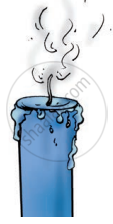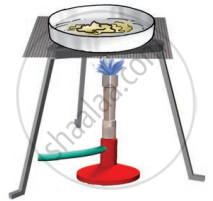NCERT Exemplar solutions for Science [English] Class 6 chapter 6 - Changes Around Us
Shaalaa.com has the CBSE Mathematics Science [English] Class 6 CBSE solutions in a manner that help students
grasp basic concepts better and faster. The detailed, step-by-step solutions will help you understand the concepts better and clarify any confusion.
NCERT Exemplar solutions for Mathematics Science [English] Class 6 CBSE 6 (Changes Around Us) include all questions with answers and detailed explanations.
This will clear students' doubts about questions and improve their application skills while preparing for board exams.
Further, we at Shaalaa.com provide such solutions so students can prepare for written exams. NCERT Exemplar textbook solutions can be a core help for self-study and provide excellent self-help guidance for students.
Concepts covered in Science [English] Class 6 chapter 6 Changes Around Us are Changes-Physical and Chemical, Classification of Change: Reversible and Irreversible Changes, Classification of Change: Desirable and Undesirable Changes, Classification of Change: Natural and Man-made Changes, Classification of Change: Periodic and Non-periodic Changes, Classification of Change: Slow and Fast Changes, Classification of Change: Physical Changes, Chemical Reaction, Effect of Heat on Solid, Liquid and Gases.
Using NCERT Exemplar Science [English] Class 6 solutions Changes Around Us exercise by students is an easy way to prepare for the exams, as they involve solutions
arranged chapter-wise and also page-wise. The questions involved in NCERT Exemplar Solutions are essential questions that can be asked in the final exam.
Maximum CBSE Science [English] Class 6 students prefer NCERT Exemplar Textbook Solutions to score more in exams.
Get the free view of Chapter 6, Changes Around Us Science [English] Class 6 additional questions for Mathematics Science [English] Class 6 CBSE,
and you can use Shaalaa.com to keep it handy for your exam preparation.
![NCERT Exemplar solutions for Science [English] Class 6 chapter 6 - Changes Around Us NCERT Exemplar solutions for Science [English] Class 6 chapter 6 - Changes Around Us - Shaalaa.com](/images/science-english-class-6_6:5f2b1b2038084cf381bfa42c826a928c.jpg)



